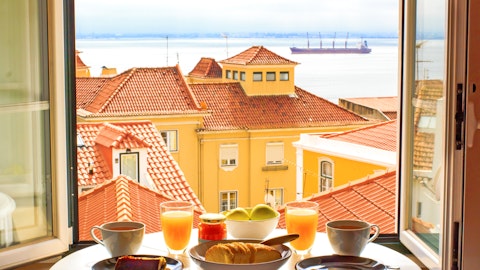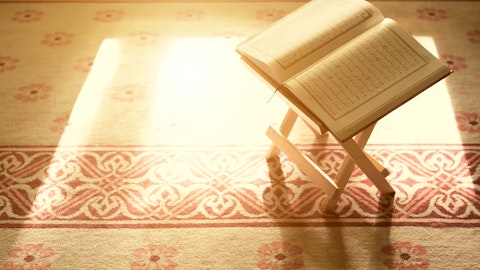The relationships between European royal families today are so intertwined that it is hardly possible to distinguish between them. All of them are related to each other to some degree, a result of centuries of royal marriages designed to increase families’ power, influence, and wealth.
Best known for this practice are perhaps the most notable European royal family, the Habsburgs. Their marriage strategy is best described by saying “Bella gerant alii, tu felix Austria, nube! – “Let others wage war. You, lucky Austria, shall marry!” And so they did. At one point, through thrones of Austria and Spain, the Habsburgs ruled over the majority of today’s Europe. Fortunately for the rest of the countries and with families, even royal ones, being what they are, they rarely saw eye to eye and often fought each other. Today, the head of the house is Karl von Habsburg.

KEG/Shutterstock.com
Intermarrying among relatives wasn’t just Habsburg thing. Many noble families practiced it. This has resulted in many interesting cases throughout history. For instance, a normal person has 1024 ancestors over 11 generations. King Alfonso XIII of Spain only had 111. Henri, Count of Paris’ all 4 grandparents were grandchildren of Louis Philippe I. Inbreeding has left some serious consequences, but royals, just like any other family, don’t like to talk about it. But as the time change, so do the noble families. There are plenty of examples of commoners gaining entry into a royal line by marriage. Edward VIII even abdicated his throne on account of a commoner, American Wallis Simpson. Grace Kelly’s marriage to Prince Rainier of Monaco is a more recent example.
Of all the countries that have King or a Queen, 10 are European ones, 12 if you count Andorra and Vatican. Out of those 10, 9 are ruled by these 6 royal families today. The black sheep among European royal families are the Bernadottes of Sweden. Becoming royal family only in 1818, they are late arrivals into the European game of thrones.
Despite family ties, European royals have often been at each other’s throats during the history. Perhaps the most drastic example is the Great War. Kaiser Wilhelm II, King George V and Tsar Nicholas II were all descendants of British King George II. That didn’t stop them from starting a war that killed millions. There are several anecdotes describing family gatherings were young Wilhelm have caused havoc, estranging himself from his British cousins, leading to him resenting them. Today, the relationships between royal families are much calmer and disputes are resolved behind the closed doors without involving the public eye.
To keep things simple, we have concentrated on European royal families that hold the throne today, other ways, there would be too many to choose from.
6. House of Liechtenstein
The Principality of Liechtenstein was created in 1719, by uniting the counties of Vaduz and Schellenberg. Anton Florian of Liechtenstein became the first Prince. Both the principality and the family are named after one of Anton Florian’s possessions, the Castle Liechtenstein in Austria. Following the turbulent first half of the 20th century, Liechtenstein became one of the first tax havens in Europe, offering low taxes to the growing number of corporations opening up. As a consequence, Liechtenstein has one of the highest standards of living in the world. Also, Prince of Liechtenstein Hans-Adam II is among the 6 wealthiest monarchs in the world, with estimated wealth of over $5 billion. In a process opposite to what most monarchies go through, Liechtenstein held the referendum in 2003 that saw the increase of Prince’s powers. He’s the only monarch in Europe that actually has some power, like vetoing laws passed by the parliament. He can also dismiss the government or any minister not to his liking, something other monarchs in Europe can only dream about.
5. House of Orange-Nassau
Counts of Nassau and their descendants have played important roles in European history since the 23th century. Orange-Nassau family have had a deciding influence on creating Northern Europe we know today. Their scions have held various titles in Germany, Netherlands, and France and even rose to the English throne. Wiiliam II, Prince of Orange, married Marry II and became William III, King of England, Scotland and Ireland in 1689. The royal couple didn’t have any children, which is probably for the best, since they were first cousins. Today, King Willem-Alexander is the King of Netherlands, while Luxemburg is ruled by his relative of Nassau-Weilburg branch, Grand Duke Henri. They are both heads of their respective family branches.
4. House of Grimaldi
The current ruling family of Monaco are descendants of one Grimaldo Canella, a Genoese trader who rose to great prominence during his lifetime. His offspring went to became Doges of Genoa, admirals of the French Navy and Princes of Salerno and Monaco. Current Prince is Albert II, a son of Rainier III and Grace Kelly. Prince Albert, following the example of his father, also took a commoner for a wife. Princess Charlene was once an Olympic swimmer from South Africa. She is 20 years Prince’s junior and their marriage raised plenty of eyebrows among European royal families. Prince Albert also competed in the Olympics, as a member of Monaco’s bobsleigh team, although without much success. He is one of the wealthiest royals in the world, with estimated wealth of more than $1 billion to his name. He’s also the only head of state to reach the North Pole while holding the office.
3. House of Bourbon
The Bourbons can trace their lineage back to one of the greatest royal families in Europe, the Kapetians. Bourbons became royalty in 1268, when King Louis IX married the daughter of Lord of Bourbon. Today, this royal family holds the thrones of Spain and Luxembourg. Although the ruling family of Luxemburg is officially called Nassau-Weilburg, the current Grand Duke Henry is a grandson of Prince Felix of Bourbon-Parma. The Spanish branch ascendance to the throne triggered one of the greatest conflicts in European history, the War of the Spanish succession. The object of the war was preventing the unification of Spain and France under one monarch and saw these two countries pitted against almost entire European continent. At the end of the war, Phillip V of Bourbon was allowed to keep the throne of Spain, but was removed from the succession line of the French one. The Bourbons split into Spanish and French branches. The Spanish Bourbons are still on the throne in the person of Felipe VI, while French side of the family was removed from Versailles when Louis Philippe I of bourbon-Orleans was forced to abdicate in 1848. Today, his heir and the heir of the French throne is Henri d’Orléans, Count of Paris.
2. House of Glücksburg
Full name of the Glücksburg royal family is House of Schleswig-Holstein-Sonderburg-Glücksburg. They are descendants of the House of Oldenburg and Scandinavians monarchs during the Calmar Union in the 15th century. Currently they hold the thrones of Norway and Denmark, by King Harald V and Queen Margrethe II respectively. They are both direct descendants of King Frederick VIII of Denmark. Frederick’s brother Vilhelm became George I, King of Greece, in 1863. The Glücksburg family ruled Helens until 1973 when a military junta overthrew the monarchy. The last King of Helens, Constantine II, hold the title Prince of Denmark, just like his cousin Harald V. Prince Phillip, Queen Elisabeth’s II husband, is also member of the Greek branch of the family, being a grandson of George I of Greece. His son Charles, Prince of Whales, besides belonging to the house of Windsor, also belong to the junior branch of the House of Glücksburg. That means that when (or if, at this point) Queen elisabeth dies and Charles is crowned King, House of Glücksburg will acquire another throne.
The current head of the house is Christoph, Prince of Schleswig-Holstein.
1. House of Saxe-Coburg and Gotha
Number one on our list of European Royal families today is House of Saxe-Coburg and Gotha. Created in 1826, when Ernest I became Duke of Saxe-Coburg and Gotha, the house was at first one of many German noble dynasties that ruled over tiny duchies and princedoms. Their rise to prominence begun when his brother Leopold was elected King of Belgium. Interestingly enough, he was first offered the Greek throne, but he refused, judging that the country was too unstable. If Greek creditors had his insight, perhaps the whole Grexit drama could have been avoided. The current ruler of Belgium, King Philippe, is Leopold’s descendant.
Ernest’s son Albert married Queen Victoria, the ruling monarch of the United Kingdom, in 1840. Their marriage became one of the greatest love stories ever told. Although never crowned King, but rather given the title of Prince Consort, Albert had a profound effect on British history. His son, Edward VII, became the first member of Saxe-Coburg and Gotha family on the throne of the United Kingdom. His son, George V, changed the family name to Windsor by a Royal decree in 1917, due to anti-German sentiment in the public.
House of Saxe-Coburg and Gotha was also on the throne of Bulgaria. The current head of the Bulgarian branch is Simeon, who was evicted from the country by the communists in 1946. However, a Hollywood-style plot, he returned to Bulgaria in 2001 and became democratically elected Prime Minister.
The last ruling house of Portugal, before the monarchy was abolished in 1910, was also a branch of Saxe-Coburg and Gotha, styled House of Braganza-Saxe-Coburg and Gotha. Manuel I had the honor of being the last King of Portugal. Since he died childless the Portuguese branch of the family died with him.
Current head of the House of Saxe-Coburg and Gotha is Andreas, Prince of Saxe-Coburg and Gotha, Duke of Saxony. His first cousin is King of Sweden, Carl XVI Gustaf. Andreas spend two years training to be a timber merchant, not a past time ordinarily entertained by European nobles.





